
Did you know home gardens can grow 10 times more fruits than big farms?
Start by checking your yard’s sunlight and soil. Pick fruits that match your weather, like apples in cool areas or strawberries in sunny spots. Water and care for your plants regularly to help them grow strong and healthy.
Grow more fruits with simple steps! Choose the right spot, plant seeds or seedlings, and watch them grow.
Use compost to make soil rich and happy. Harvest fruits when they are ripe and enjoy fresh, sweet treats all season long.
Easy and fun for any family!
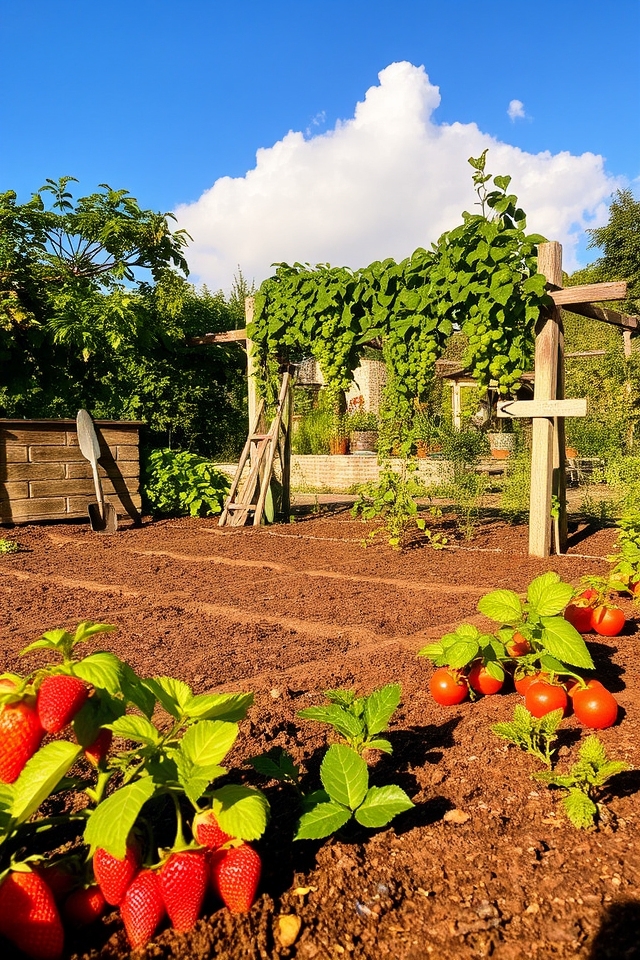
Evaluating your space and climate is essential for a successful fruit garden. Begin by assessing the amount of sunlight your garden receives, as most fruit plants thrive in full sun for at least six to eight hours daily. Consider the soil type and drainage, as well as your local climate conditions, including temperature ranges and frost dates. These factors will guide you in selecting the right fruit varieties that can flourish in your specific environment.
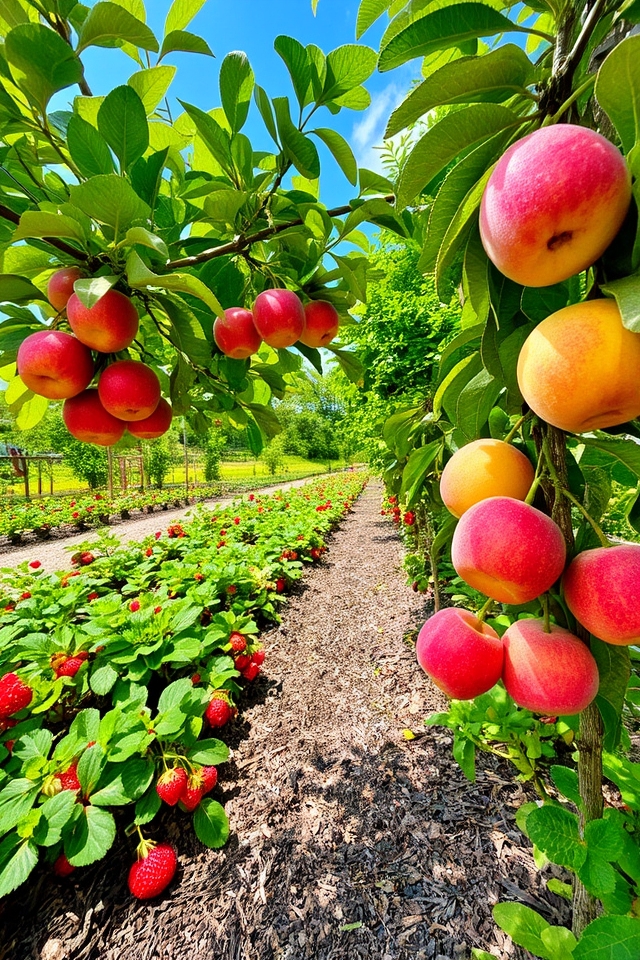
Choosing the right fruits for your region is essential for a successful garden. Consider your local climate, soil type, and the length of your growing season. Fruits like apples and pears thrive in cooler areas, while strawberries and peaches prefer warmer climates. Additionally, consider disease resistance and the amount of sunlight your garden receives. Research native varieties that are suited to your environment, as they often require less maintenance and are better adapted to local conditions.
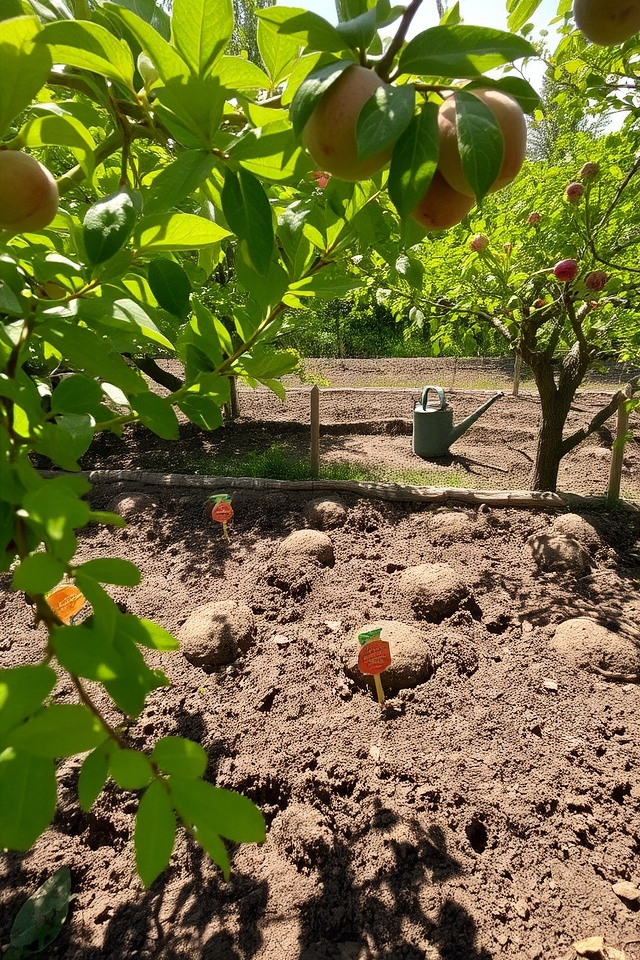
When planning a fruit garden, it’s essential to assess sunlight and soil conditions. Most fruit trees and plants thrive in full sunlight, requiring at least 6-8 hours of direct sun daily. Test your soil’s pH and nutrient levels to guarantee ideal growth; many fruits prefer slightly acidic to neutral soil. Amending soil with organic matter, like compost, can enhance fertility and drainage, creating a healthy environment for your fruits to flourish.
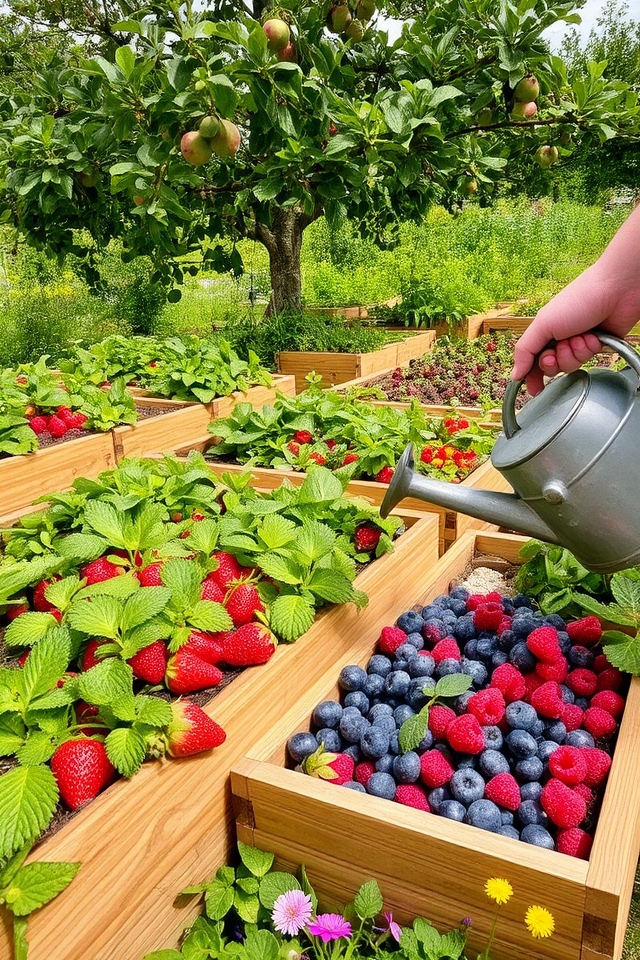
Utilizing raised beds for your fruit garden can greatly improve drainage, which is essential for healthy plant growth. The elevated structure allows excess water to escape more easily, preventing root rot and promoting aeration. Additionally, raised beds warm up quicker in the spring, extending the growing season. They also enable better soil management, helping you control the quality and nutrients in your garden. Overall, raised beds enhance both productivity and the health of your fruit plants.
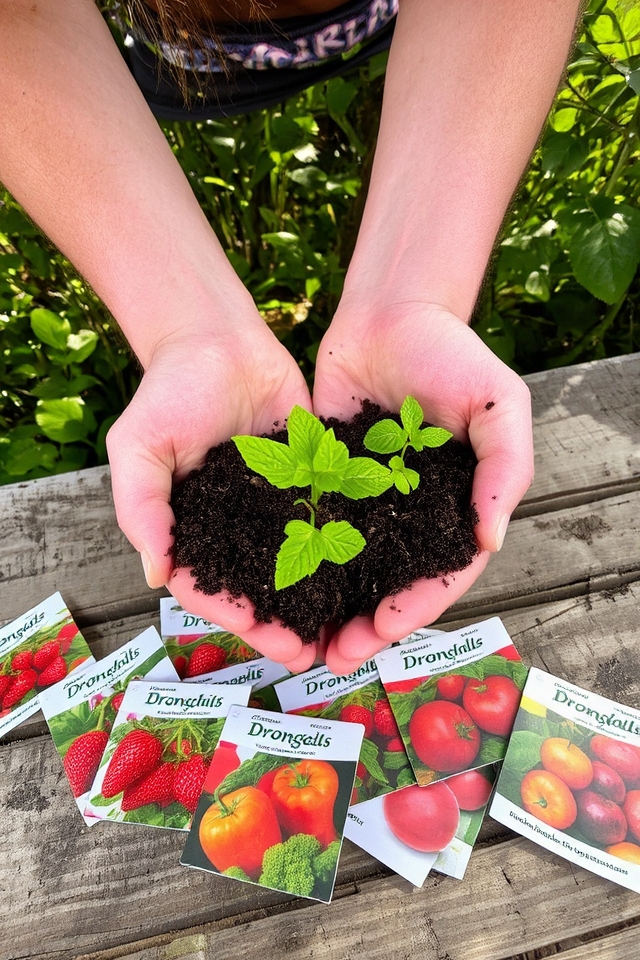
Starting your fruit garden with quality seeds or seedlings is essential for a successful harvest. High-quality seeds guarantee healthy plants and better resistance to pests and diseases. Look for varieties suited to your climate and soil conditions. If opting for seedlings, choose those from reputable nurseries to avoid common issues, such as root rot or poor growth. Investing in quality from the beginning sets a strong foundation for a flourishing fruit garden.
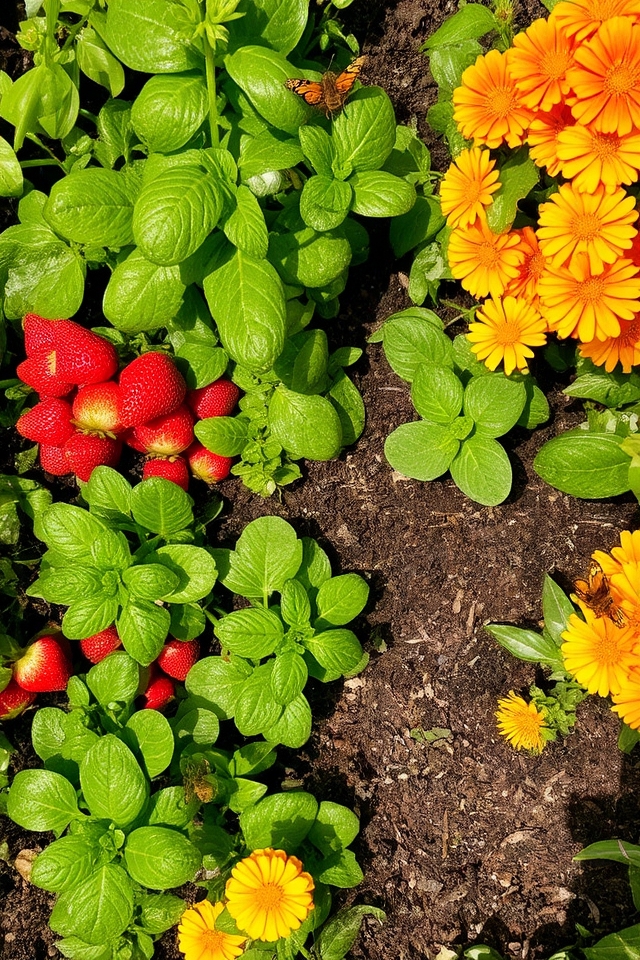
Incorporating companion planting into your fruit garden can greatly enhance plant health and yield. By strategically pairing compatible plants, you can improve pest control, boost pollination, and even enhance nutrient absorption. For instance, planting basil near strawberries can deter harmful insects, while marigolds can attract beneficial pollinators. Additionally, the diverse root structures of companion plants can help aerate soil and promote deeper root growth, creating a thriving environment for your fruit crops.
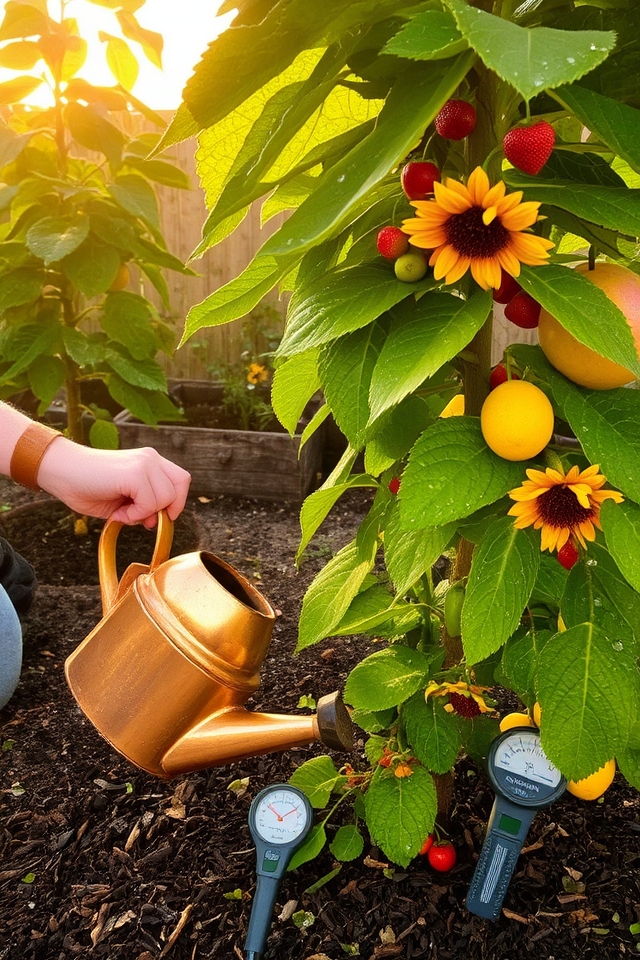
Proper watering techniques are vital for maintaining a healthy fruit garden. It is important to water deeply and infrequently to encourage deep root growth, rather than shallow, frequent watering that can lead to weak roots. Early morning is the best time to water, as it allows plants to absorb moisture before the heat of the day. Always check the soil moisture about an inch down; if it feels dry, it’s time to water. Avoid overhead watering to prevent fungal diseases, and consider using mulch to retain soil moisture.
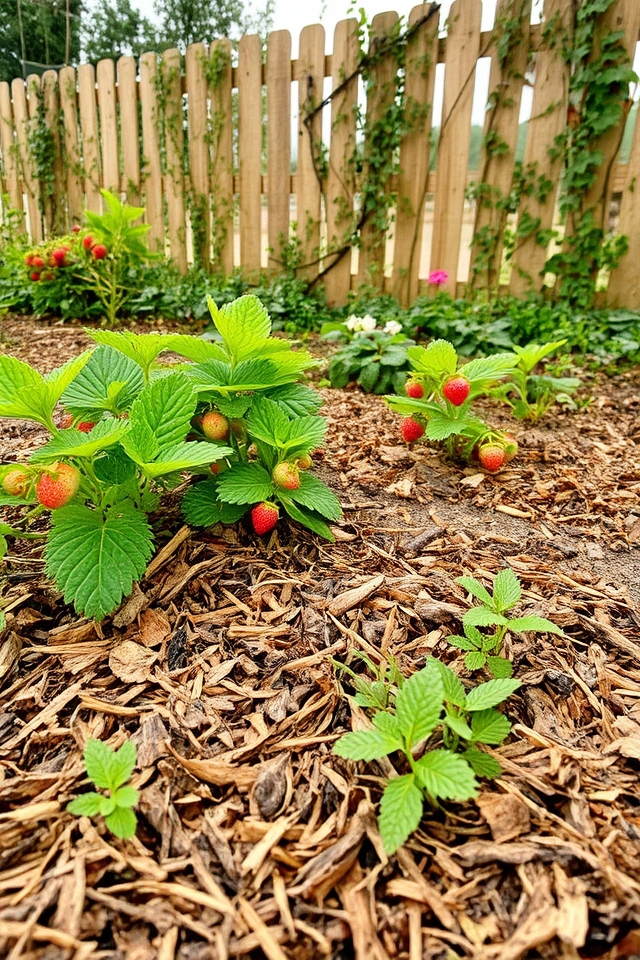
Implementing mulching in your fruit garden is an effective strategy for moisture retention. A layer of organic mulch, such as straw, wood chips, or shredded leaves, helps to reduce evaporation from the soil, keeping it consistently moist. Mulch also suppresses weed growth, allowing your fruit plants to thrive without competition for nutrients and water. Additionally, as the mulch breaks down, it enriches the soil, promoting healthy root development and enhancing overall fruit yield.
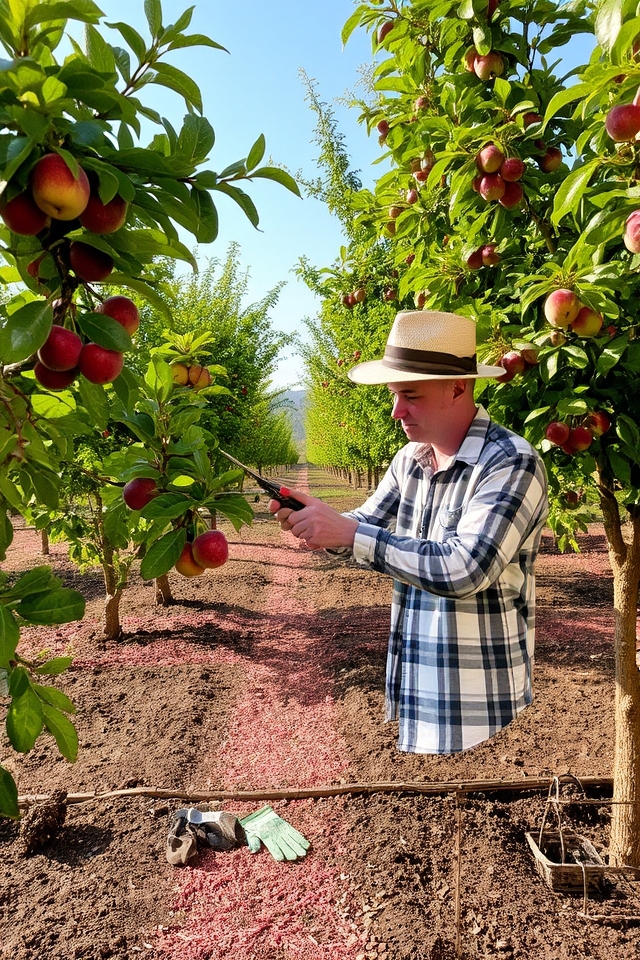
Proper pruning is vital for maintaining a healthy fruit garden. By removing dead or diseased branches and thinning out crowded areas, you promote better airflow and sunlight penetration, which aids in fruit production. Pruning also encourages the growth of strong, productive branches while shaping the tree for peak growth. Timing is essential; late winter or early spring is often the best period for most fruit trees, allowing them to flourish during the growing season.
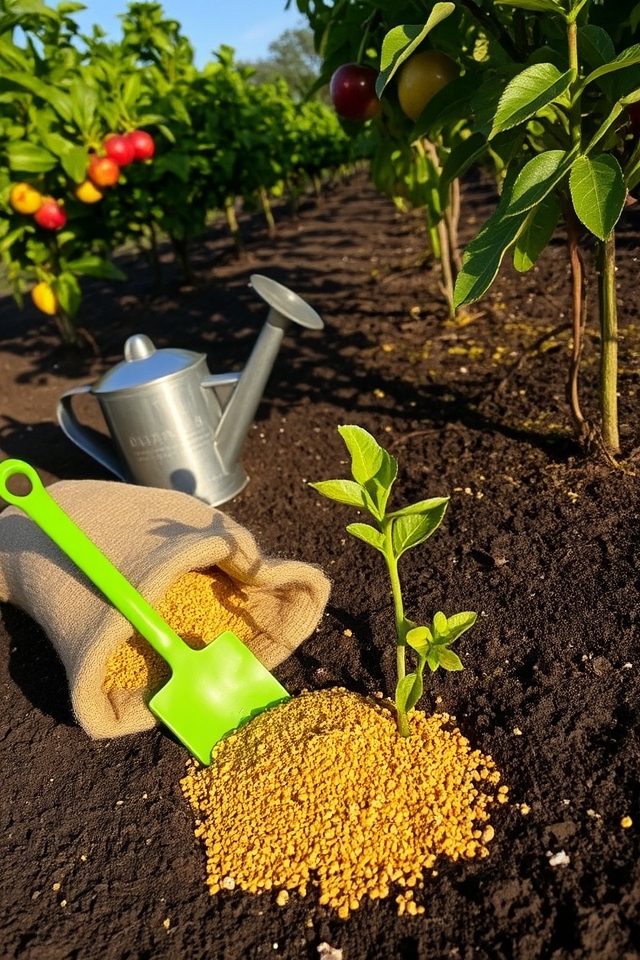
To promote ideal growth in your fruit garden, careful fertilization is essential. Begin by conducting a soil test to determine nutrient deficiencies. Choose a balanced fertilizer or one tailored to fruit-bearing plants, applying it during the growing season when your plants need nutrients most. Be mindful of the application rate; over-fertilizing can harm plants and soil health. Remember to use organic options whenever possible to maintain sustainable gardening practices. Regularly monitor your plants for signs of nutrient deficiency and adjust your fertilization strategy accordingly.
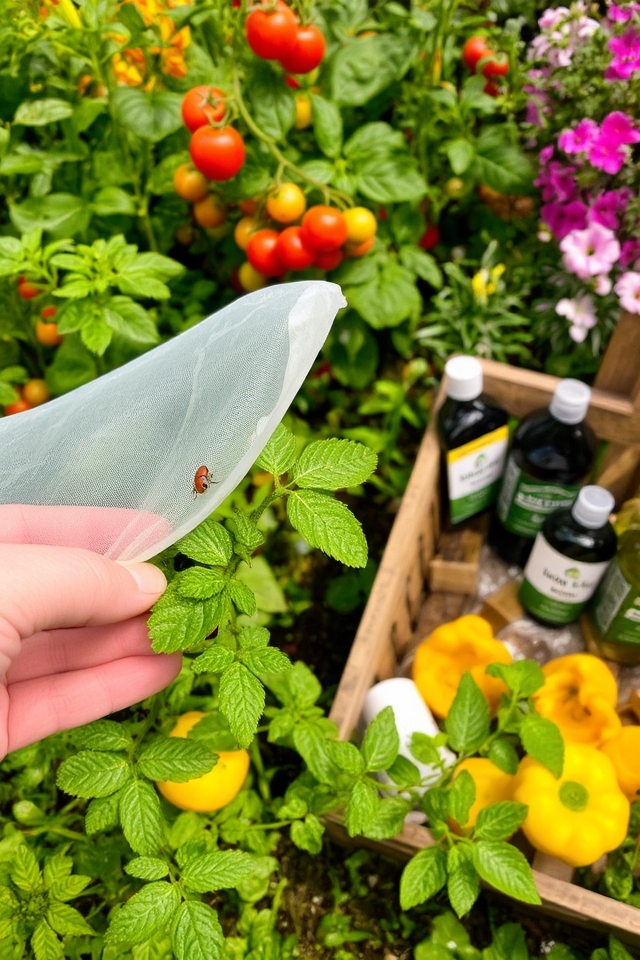
To protect your fruit garden from pests, start by encouraging beneficial insects such as ladybugs and lacewings that naturally control pest populations. Use physical barriers like floating row covers and nets to shield plants from larger pests. Regularly inspect your plants for signs of infestations and remove affected areas promptly. Introducing organic pest control options, such as neem oil or insecticidal soap, can also help defend your garden while minimizing harm to beneficial organisms.
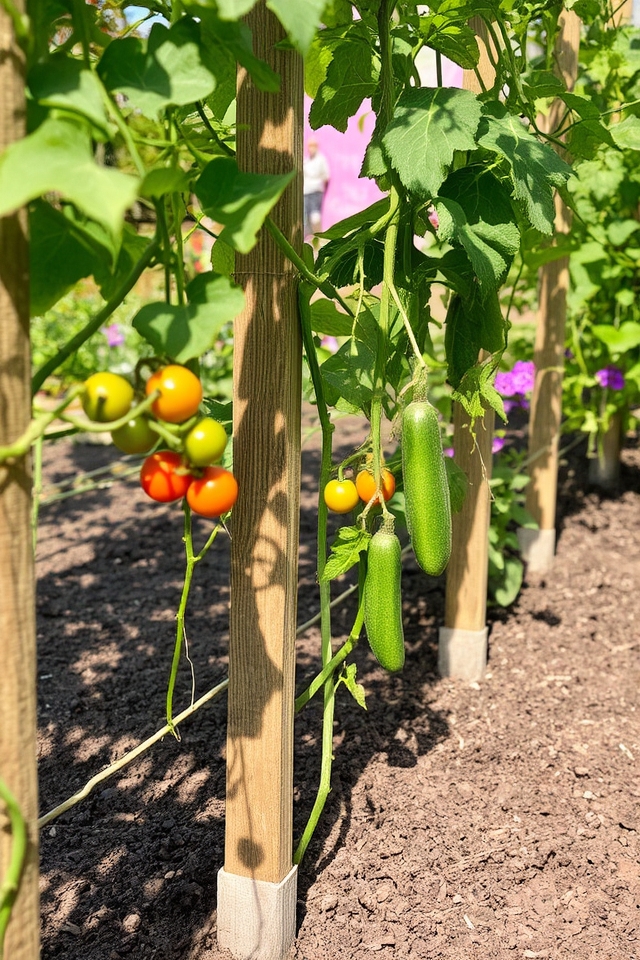
Providing support to your fruit plants with trellises is essential for healthy growth and maximizing yield. Trellises elevate plants off the ground, improving air circulation and reducing the risk of fungal diseases. They also encourage better sun exposure and make harvesting easier. Choose materials like wood, metal, or durable plastic for your trellis, ensuring it’s sturdy enough to support the weight of fruit-bearing plants. Regularly check and adjust the ties to promote strong, vertical growth.
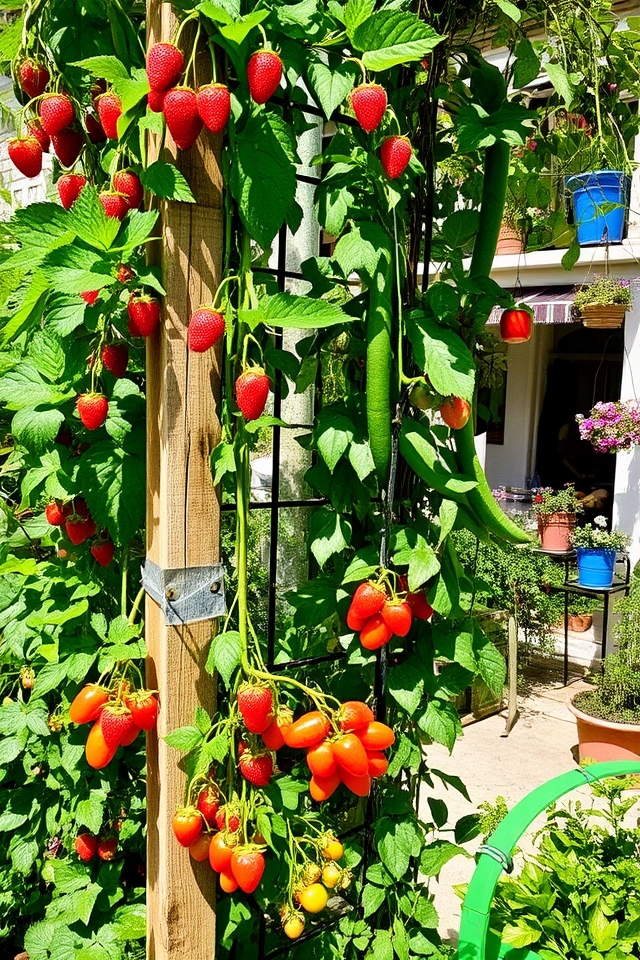
Vertical gardening is an excellent solution for small spaces, allowing you to maximize your growing area while minimizing the footprint. By utilizing walls, trellises, and vertical planters, you can cultivate a variety of fruit-bearing plants such as strawberries, tomatoes, and climbing beans. This method not only saves ground space but also enhances air circulation and sunlight exposure, leading to healthier plants. Incorporating vertical gardening techniques can transform limited areas into lush, productive fruit gardens.
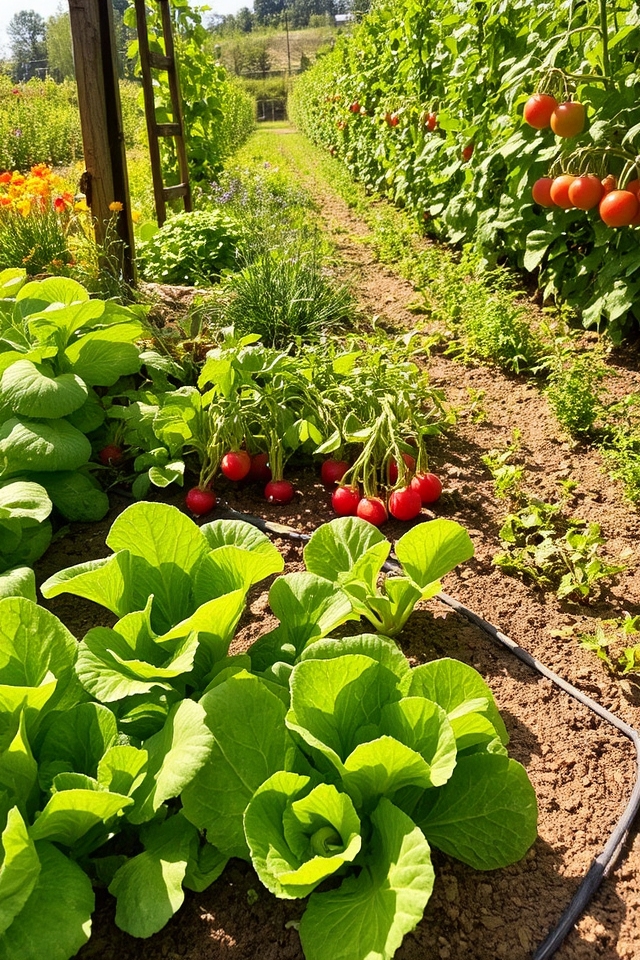
Planting in successive cycles, also known as succession planting, is a fantastic strategy for gardeners looking to enjoy a continuous harvest throughout the growing season. By staggering sowing times, you can guarantee that as one crop matures, another is just beginning to thrive. For instance, if you plant quick-maturing crops like lettuce or radishes every couple of weeks, you’ll have a steady supply of fresh produce. This method not only maximizes space but also keeps your garden vibrant and productive.
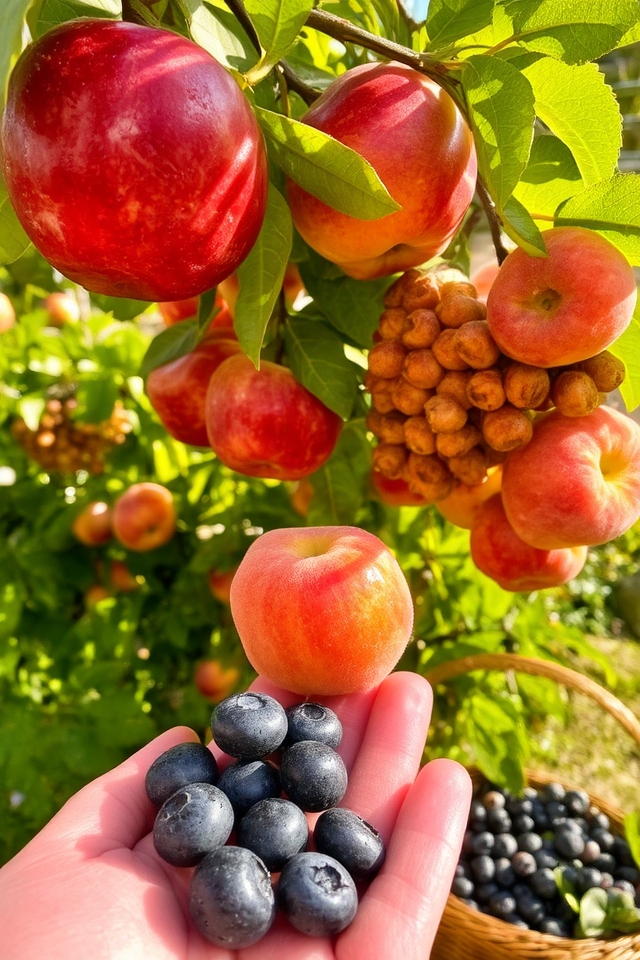
Harvesting fruit at the right time is essential for achieving peak flavor and quality. Fruits such as apples, peaches, and berries should be picked when they are fully ripe, as this is when their sugars and flavors are at their best. Signs of ripeness can include color changes, softness, and aroma. Regularly checking your fruit for these indicators guarantees you enjoy the sweetest, most flavorful harvest possible. Timing your harvest can make all the difference in your fruit garden’s success.
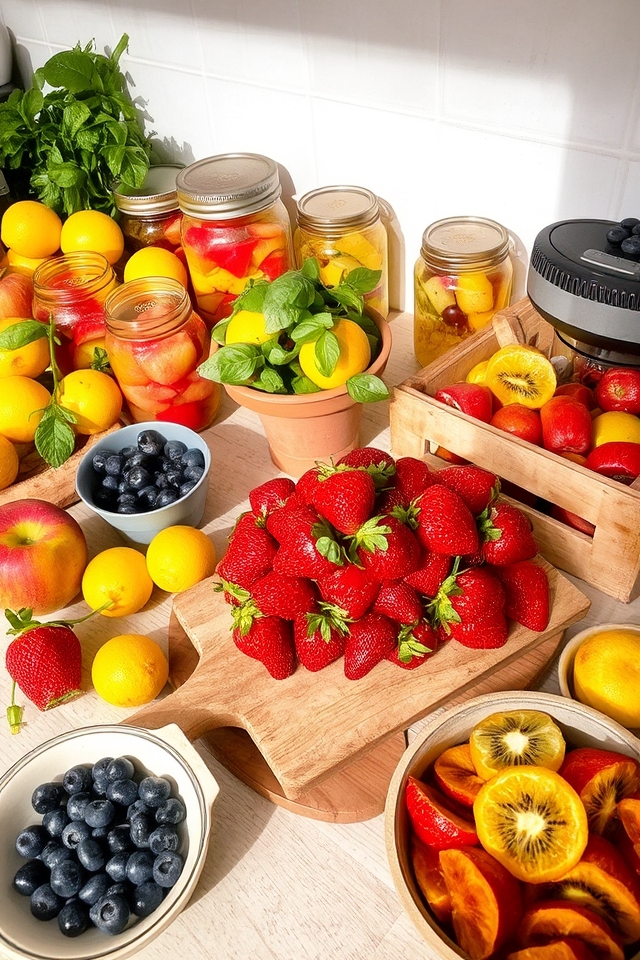
Storing and preserving your fruit bounty can extend the joy of your harvest long after the growing season. To maintain freshness, refrigerate berries and apples, while citrus fruits can be kept at room temperature. For long-term storage, consider freezing or canning. Wash and dry fruits before freezing, or use sterilized jars for canning. Dehydrating fruits offers another delightful option, creating tasty snacks while retaining essential nutrients. Proper techniques guarantee you enjoy your fruit garden’s rewards for months to come!
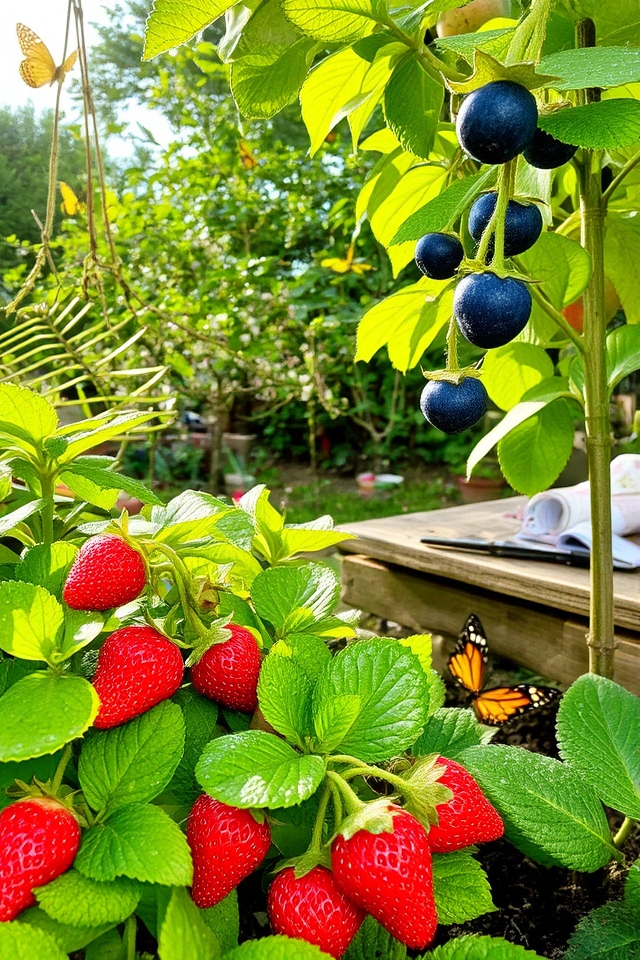
To cultivate a thriving fruit garden, it’s crucial to keep learning and experimenting each season. Each year brings new challenges and growing conditions, so take the opportunity to research different fruit varieties, pest management techniques, and seasonal care practices. Experiment with planting dates, soil amendments, and watering strategies to find what works best in your garden. By staying curious and open to new methods, you’ll not only enhance your gardening skills but also yield a more bountiful harvest.
By following these tips, you’re well on your way to cultivating a garden that rivals the fabled orchards of the ancients. Just like those who tended the Garden of Eden, patience and dedication will yield a bounty that nourishes both body and soul. Keep experimenting with your techniques and savor the fruits of your labor, preserving them like treasures to enjoy throughout the year. Remember, gardening isn’t just a task; it’s a journey towards self-sufficiency and joy.

Don't let aphids, slugs, and caterpillars ruin another plant. Take back control with simple, natural methods that actually work.